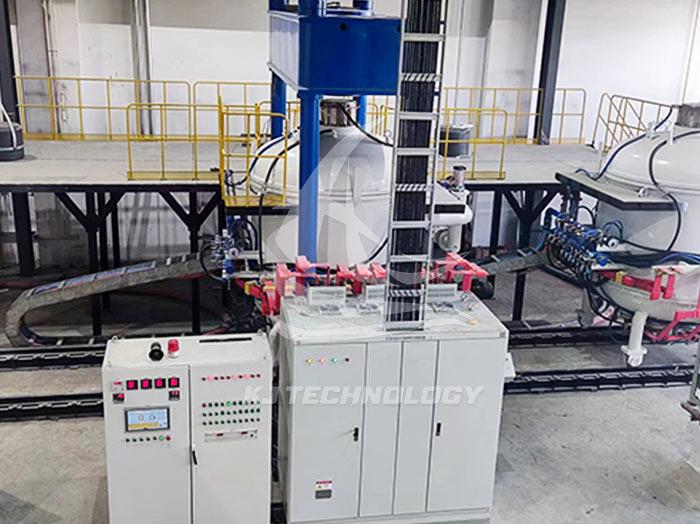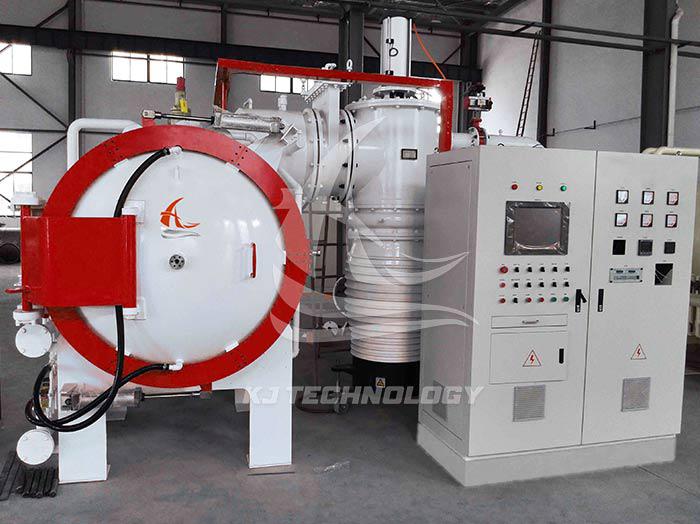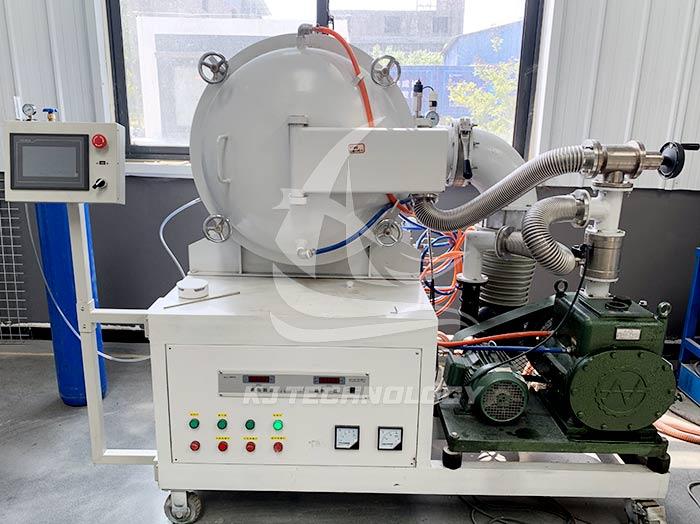The temperature of the metal heat treatment furnace cannot rise
 08-12-2025 Author: KJ technology
08-12-2025 Author: KJ technology
The inability to increase the temperature of a metal heat treatment furnace may be caused by various factors such as heating element failure, power supply issues, abnormal control systems, structural defects in the furnace body, improper process operation, or external interference. The following is a detailed analysis, covering possible causes and corresponding solutions:
1. Heating element malfunction
Heating element damaged
Reason: Broken resistance wire, aging of silicon carbide rod, or rupture of silicon carbide heating tube, resulting in a decrease in heating power or complete failure.
resolvent:
Visual inspection: Observe whether the heating element turns red evenly, and replace it if there is no redness or breakage in some areas.
Resistance measurement: Use a multimeter to measure the resistance value of the heating element, and compare it with the nominal value (for example, the resistance of the silicon carbide rod should be close to the cold state nominal value). If the deviation is greater than 20%, it needs to be replaced.
Replacement specification: Select heating elements of the same power and size according to the equipment manual to avoid temperature fluctuations caused by power mismatch.
Loose connection of heating element
Reason: Oxidation of wiring terminals and loosening of screws lead to increased contact resistance and decreased heating power.
resolvent:
Tighten the wiring terminal screws and clean the oxide layer.
Regularly check the temperature at the connection of the heating element. If there is local overheating (>100 ℃), it is necessary to re tighten or replace the wiring terminals.
2. Power supply issue
Insufficient power supply voltage
Reason: The input voltage is lower than the rated value (such as 380V system voltage<360V), resulting in insufficient heating power.
resolvent:
Measure the input voltage with a multimeter. If it is too low, check the transformer, circuit, or contact the power supply department.
Install a voltage regulator to ensure that the voltage remains stable within ± 5% of the rated value.
Three phase electrical imbalance
Reason: Three phase voltage or current deviation>5%, resulting in uneven heating of the heating element.
resolvent:
Measure the three-phase current with a clamp meter. If the deviation is greater than 5%, adjust the load distribution or check the circuit.
Avoid connecting single-phase heating elements in three-phase systems to ensure balanced three-phase loads.
3. Abnormal control system
Temperature controller malfunction
Reason: Improper PID parameter settings, sensor signal interference, or hardware damage to the controller, resulting in abnormal output signals.
resolvent:
Parameter calibration: Adjust the PID parameters based on the characteristics of the furnace (such as P=20-50, I=60-180s, D=5-15s).
Signal inspection: Use an oscilloscope to observe the output signal of the temperature sensor (such as the mV signal of a K-type thermocouple). If the fluctuation is greater than ± 0.5%, the sensor needs to be replaced.
Controller replacement: If the controller has no output or abnormal output, it needs to be replaced with a controller of the same model and reprogrammed.
Solid state relay (SSR) damaged
Reason: SSR breakdown or poor contact, causing the heating element to fail to turn on and off normally.
resolvent:
Measure the resistance of the SSR input/output terminal with a multimeter. If the resistance of the output terminal is close to 0 Ω, it indicates that it has been broken down and needs to be replaced.
Regularly clean the dust on the SSR heat sink to ensure good heat dissipation and avoid overheating damage.
4. Defects in furnace structure
Poor furnace sealing
Reason: Air leakage from the furnace door, observation window, or gas pipeline can cause heat loss or atmosphere interference.
resolvent:
Leak detection: Apply soapy water to the furnace door and pipeline connections, and observe for the formation of bubbles.
Sealing repair: Replace the aging sealing ring, adjust the furnace door hinge to make the sealing surface fit tightly.
Atmosphere control: If it is a controllable atmosphere furnace, it is necessary to ensure stable gas flow and avoid carbon potential fluctuations caused by gas leakage.
Damage to refractory materials
Reason: Cracking of furnace lining, deformation of furnace bottom plate, resulting in heat loss or short circuit of heating elements.
resolvent:
Lining inspection: Use an infrared thermal imager to detect the surface temperature of the lining every six months. If the local temperature is greater than 300 ℃, it indicates that the insulation layer is damaged and needs to be repaired or replaced.
Furnace bottom plate replacement: If the deformation of the furnace bottom plate is greater than 2mm, it needs to be replaced to avoid unstable placement of parts or short circuit of heating elements.
5. Improper process operation
Improper placement of parts
Reason: Excessive stacking of parts or obstruction of heating elements can hinder heat transfer.
resolvent:
Reasonable placement: The distance between parts should be ≥ 10mm to avoid obstructing heating elements or thermocouples.
Tool optimization: Use heat-resistant steel tool racks to ensure even heating of parts.
The heating rate is too fast
Reason: The heating rate exceeds the capacity of the equipment or parts, resulting in overload of the heating element or cracking of the parts.
resolvent:
Segmented heating: Set the heating curve according to the process requirements (such as high carbon steel heating rate ≤ 50 ℃/h).
Load monitoring: Observe the heating power through a power meter, and if the power continues to reach full load, reduce the heating rate.
6. External interference factors
The ambient temperature is too low
Reason: In winter, the ambient temperature is less than 5 ℃, which accelerates the heat dissipation of the furnace body and makes it difficult to raise the temperature.
resolvent:
Furnace room insulation: Install insulation layers on the walls of the furnace room to reduce heat loss.
Preheating furnace body: Preheat the furnace body by running it empty for 1 hour, and then load the parts for heat treatment.
Cooling system interference
Reason: Malfunction of the water cooler or oil cooler, resulting in excessive cooling of the furnace body or heating elements.
resolvent:
Cooling water flow adjustment: Close non essential cooling branches to ensure that the cooling water flow rate of the heating element is ≤ 5L/min.
Cooling system maintenance: Check whether the pressure and flow rate of the water cooler are normal, and clean the clogged filters.








